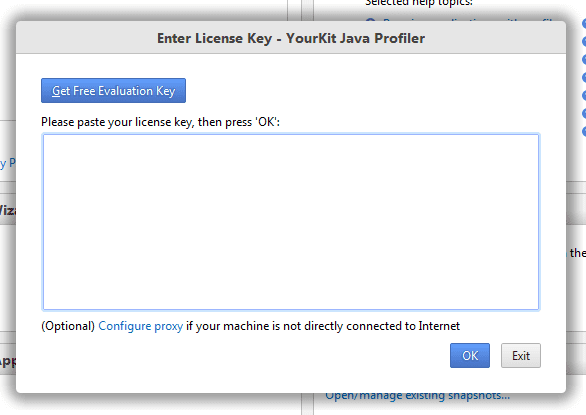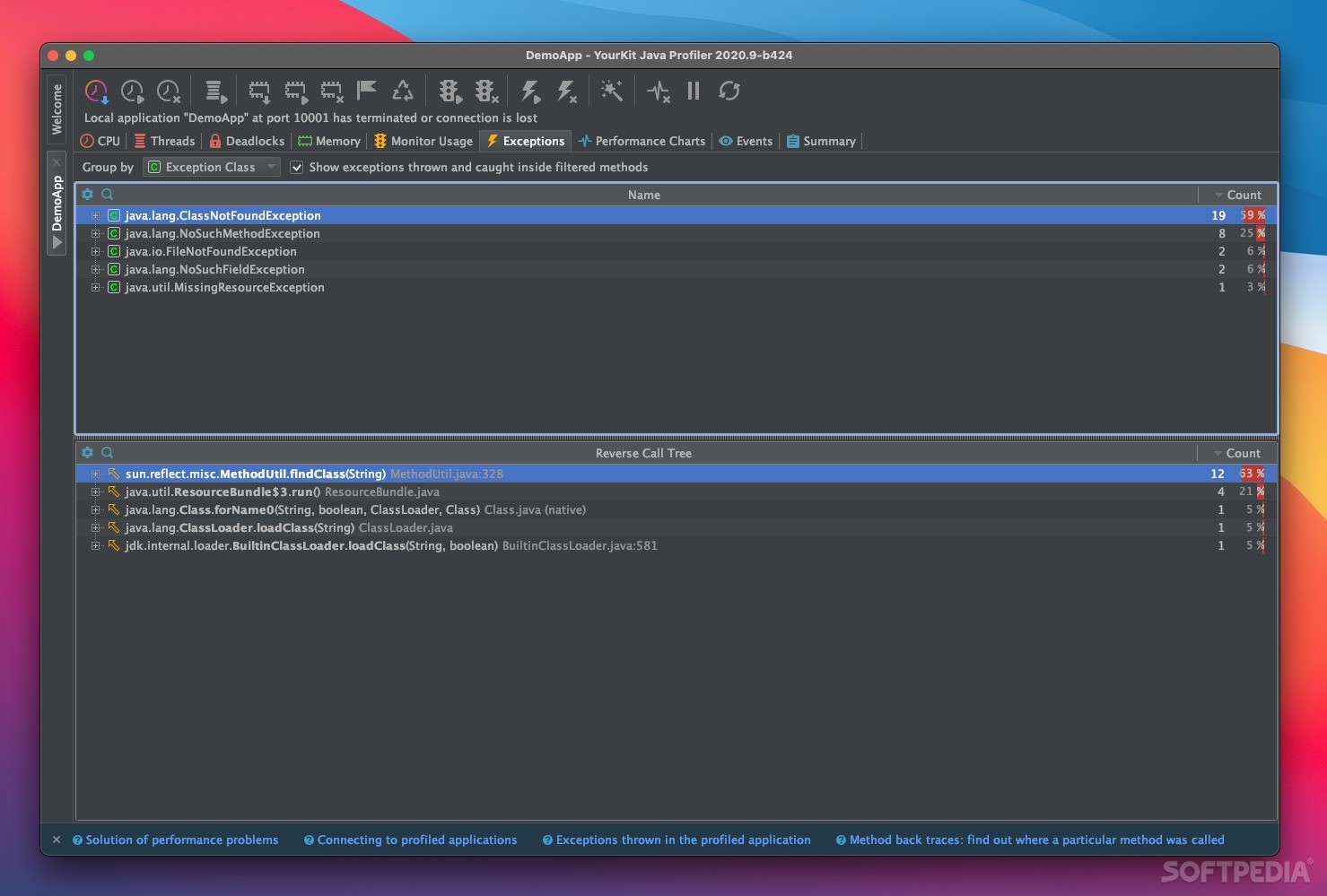


To create a new test for an existing class: The test suite class then appears in the Projects window under the package-name node in the test folder. The IDE creates the test suite class based on the parameters you have specified and opens the class in the editor. When you create an empty test the IDE generates a test class that does not contain any skeleton methods.
YOURKIT JAVA PROFILER INTELLIJ CODE
Select the desired code generation options and click Finish. Specify the test class name, folder and package.

In the New File wizard, select the Unit Test category and JUnit Test or TestNG Test Case in the File Types pane. By default the IDE includes all the test classes as part of the generated test suite.Īlternatively, you can create a test suite by choosing File > New File, selecting the Unit Test category, and selecting Test Suite or TestNG Test Suite in the File Types pane.Ĭhoose File > New File from the main menu. If any of the test classes already exist, those classes are updated. The IDE generates test classes for all enclosed classes and stores them in the project's Test Packages node. Select the Generate Test Suites checkbox.

Right-click the package node containing the source files for which you want to generate the test suite in the Projects window and choose Tools > Create Tests (Ctrl+Shift+U) from the context menu. Select the desired code generation options and click OK.Īlternatively, you can create a test by choosing File > New File, selecting the Unit Tests category, and selecting JUnit Test or TestNG Test Case in the File Types pane. You can modify the default name of the test class, but some of the navigation in the IDE between classes and test classes might not function if the name of the test class does not contain the name of the class that is tested. Right-click the class in the Projects window and choose Tools > Create Tests (Ctrl+Shift+U) to open the Create Tests dialog box. If no test directory exists in your project or you want to specify a different directory for your test, you can specify a test directory in the project properties dialog. The IDE creates a Test Packages directory by default when you create a project. To create a test, the project must have a test directory for the tests. Section 8.20, "Working with Captured Profiling Results"ĭepending on the version of the unit testing framework you are using, the name of the test class is not required to end with Test. Section 8.19, "Working with Live Profiling Results" Section 8.17, "Analyzing CPU Performance" Section 8.16, "Monitoring an Application" Section 8.15, "Setting a Profiling Point" Section 8.14, "Setting Profiling Filters" Section 8.11, "Profiling a Free-form Project" Section 8.10, "Attaching the Profiler to a Remote Application" Section 8.8, "Selecting a Profiling Task" Section 8.7, "Starting a Profiling Session" Section 8.6, "Configuring Unit Test Settings" Section 8.2, "Testing Java Application Projects with Unit Tests" Section 8.1, "About Testing and Profiling Java Application Projects" This chapter contains the following sections:
YOURKIT JAVA PROFILER INTELLIJ HOW TO
This chapter describes how to use the tools provided by the IDE to run unit tests and to profile Java applications. 8 Testing and Profiling Java Application Projects


 0 kommentar(er)
0 kommentar(er)
